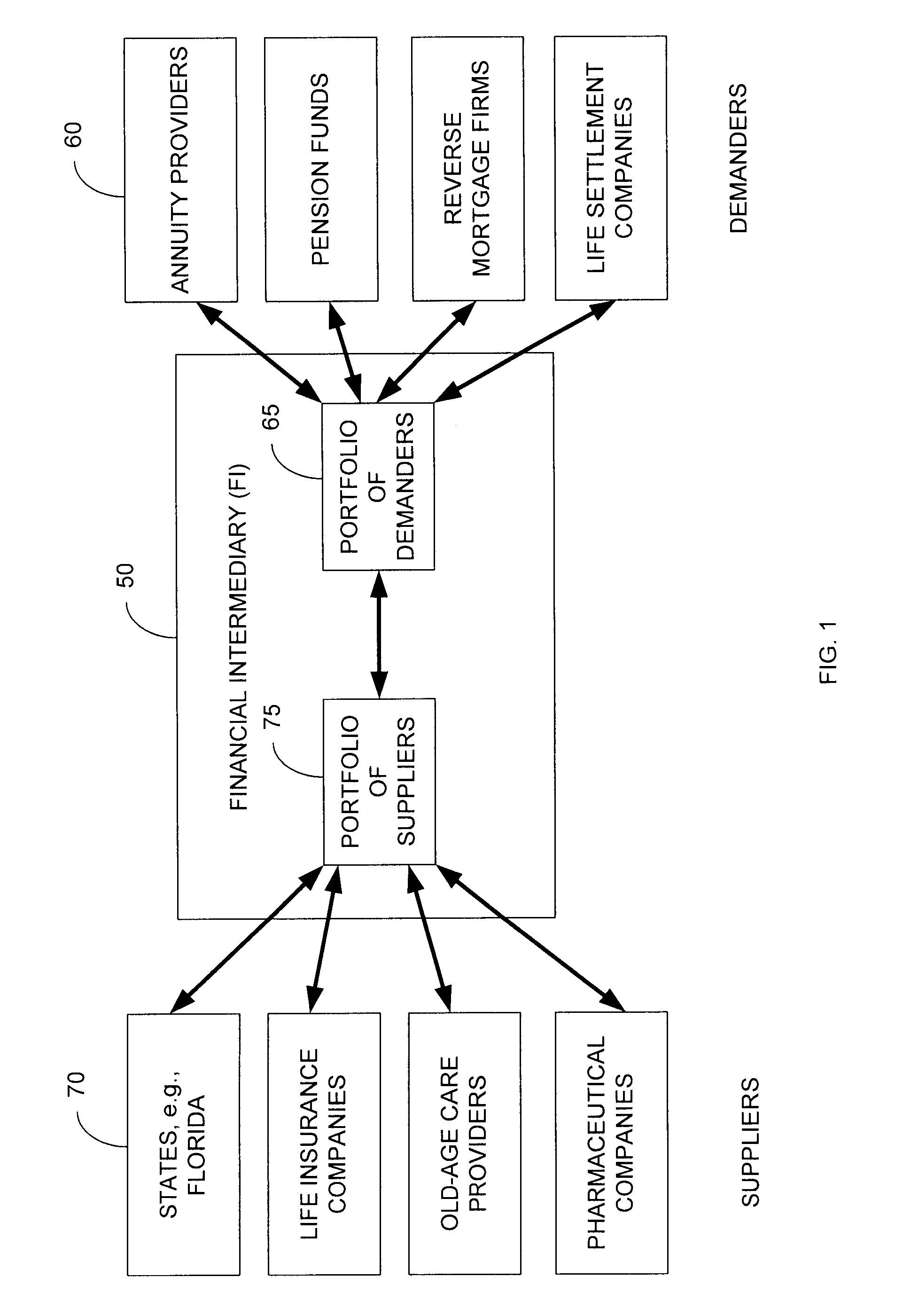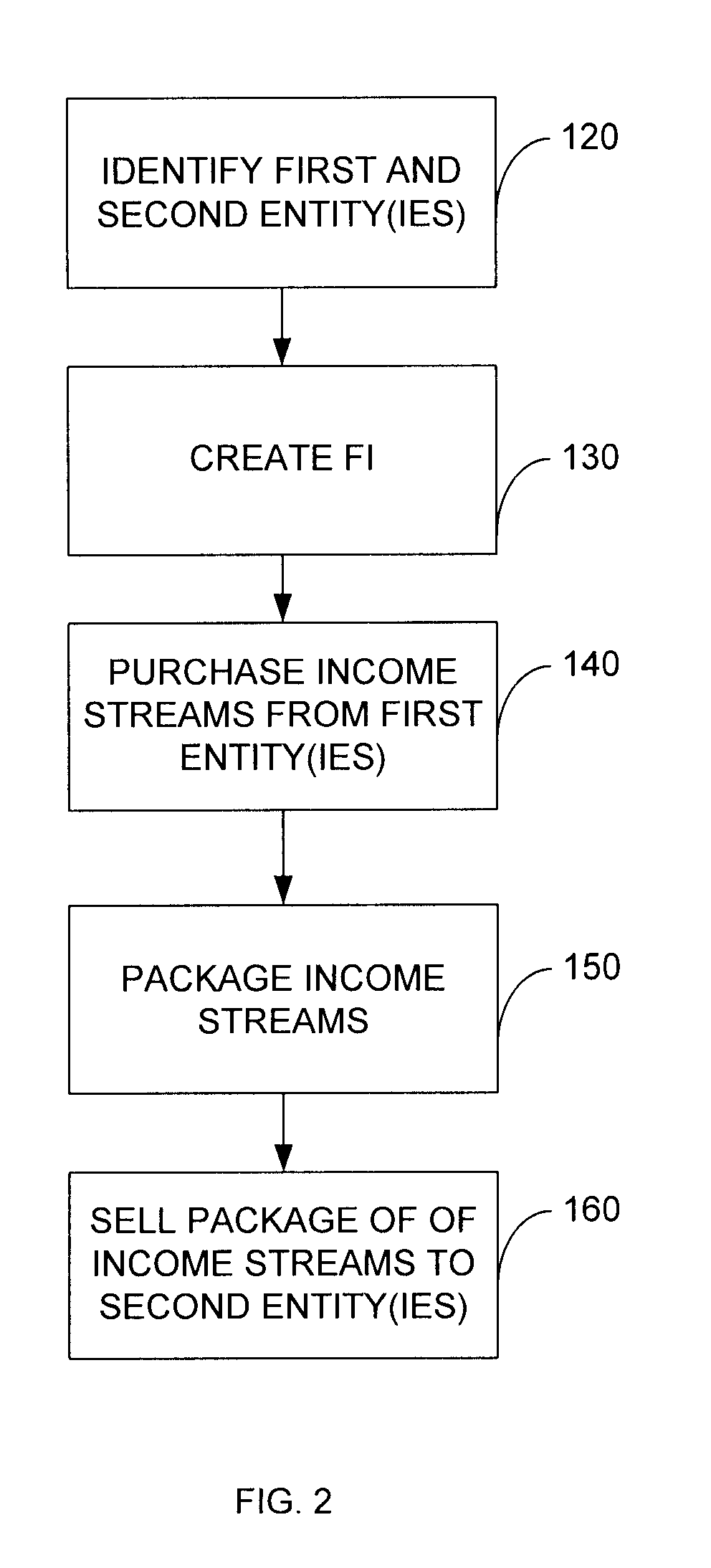Methods and systems for managing longevity risk
a technology of longevity risk and management methods, applied in the field of methods and systems for managing longevity risk, can solve the problems of unpredictably long life of individuals, requiring expensive treatment, and individuals may resort to inefficient and/or expensive strategies designed to provide for their potentially longer than expected li
- Summary
- Abstract
- Description
- Claims
- Application Information
AI Technical Summary
Benefits of technology
Problems solved by technology
Method used
Image
Examples
example 1
[0037]On Nov. 18, 2004, Florida's Division of Bond Finance (DBF)—Florida's debt agency—issued $172 million in AAA bonds. Each bond pays interest every June 1 and December 1 and matures in 2024. The final principal payment is $1 million. An FI may purchase the entire bond issue and DBF and FI may enter into the following swap agreement:
[0038]1) Every five years a percentage difference between the realized survival rate and the anticipated survival rate (in a prior five years period), based on a reference index, may be used as the swap rate. If the realized survival rate of a specified cohort exceeds the expected one, then DBF will transfer to FI an amount equivalent to the swap rate times the notional amount compounded by the prevailing interest rate at each five year increment in the prior five year term. If the reverse occurs, then the FI will transfer an equivalent amount to DBF.
[0039]2) FI in turn will issue a survival linked bond to pension funds. This bond will be linked to a s...
example 2
[0041]A bank offers individuals a long term savings (e.g., withdrawal) plan in which an individual exchanges a lump sum for a stream of monthly payments for 20 years. The principal and the coupon are amortized over the 20 years. After 20 years the individual will continue receiving the same monthly payments for a period to be determined at the end of the 20 years. The length of that period will be determined by the remaining life expectancy of the 85 years old cohort, in 20 year's time. Alternatively the remaining life expectancies to which the plan is linked may be national expectancies that are published by relevant national statistics authorities.
[0042]To hedge its risk the bank may engage in a swap agreement with the FI that is holding a portfolio of suppliers (e.g., the state of Florida, chain of nursing homes, pharmaceuticals and life insurance companies.) The savings plan in this example may be different from a regular life annuity because, unlike an annuity, those who die ea...
PUM
 Login to View More
Login to View More Abstract
Description
Claims
Application Information
 Login to View More
Login to View More - R&D
- Intellectual Property
- Life Sciences
- Materials
- Tech Scout
- Unparalleled Data Quality
- Higher Quality Content
- 60% Fewer Hallucinations
Browse by: Latest US Patents, China's latest patents, Technical Efficacy Thesaurus, Application Domain, Technology Topic, Popular Technical Reports.
© 2025 PatSnap. All rights reserved.Legal|Privacy policy|Modern Slavery Act Transparency Statement|Sitemap|About US| Contact US: help@patsnap.com



